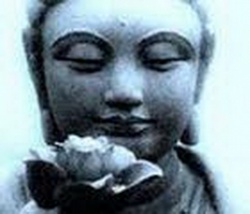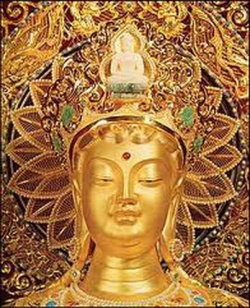Sarvāstivāda
Sarvāstivāda. The school of Sarvāstivāda was one of the so-called Eighteen Schools (nikāya, ācariyavāda) of early Buddhism. The term Sarvāstivāda is also used to designate the body of doctrine and literature associated with this community. The sociological nature of the group, however, remains unknown.
The sociological nature of the group, however, remains unknown.
Historical Development
Although it is customary to refer to the Sarvāstivāda as a Hīnayāna "sect," it seems evident that it was primarily a monastic and intellectual movement—thus the term sect might be inappropriate.
The term Hīnayāna is equally problematic, and in this case it must be taken to establish only a definition by exclusion—"that which is not Mahāyāna."
The Sarvāstivāda was one of the parent lines in the genealogic tree of the Eighteen Schools, consistently identified in traditional doxography as one of the earlier Sthavira groups.
From the Sarvāstivāda arose in turn, according to most accounts, the schools of the Sautrāntika and the Mūlasarvāstivāda, and perhaps that of the Dharmaguptaka.
Existing knowledge of the history and teachings of the early schools is based on late sources, and there is little agreement among scholars as to the true affiliation of the sects mentioned in these sources.
It is not clear, for instance, whether the Mahīśāsaka school should be classified under the Sarvāstivāda or under "mainline" Sthaviras.
There is, nevertheless, agreement among the classical sources on the derivation of the Sarvāstivāda from a main Sthavira trunk, most probably after the great schism that separated the early Sthavira from the Mahāsāṃghika.
The separation of Sarvāstivāda from its trunk of origin is supposed to have taken place at the Third Buddhist Council, held under King Aśoka. They separated from the Sthaviras according to some accounts, from the Mahīśāsaka, according to others.
It is known from inscriptional evidence that the area of greatest strength of the Sarvāstivāda was the Northwest, from Mathura to Afghanistan and the Central Asian desert. But they also were known in East and South India. Their influence extended to Indonesia, and, indirectly, to China.
The Sarvāstivādins received the royal patronage of Kaniṣka (second century ce). According to tradition, the Tripiṭaka of this school was finally closed during his reign. But it is not clear whether this legend is due to a confusion between the writing of their Abhidharma and the compilation of the canon.
It is more likely that most of the Sarvāstivādin Tripiṭaka was redacted earlier, and that by the second century ce Sarvāstivādin scholars were engaged in exegetical work.
This was the time for the major systematic works, and the beginning of the work of synthesis such as would develop into the Mahāvibhāṣā.
As a school of philosophy Sarvāstivāda was gradually absorbed by the Sautrāntika and the Mahāyāna.
But it remained a strong monastic institution, especially in the Northwest. Sarvāstivāda survived at least into the ninth century ce through the Mūlasarvāstivāda subschool.
By counting Mūlasarvāstivādin texts as works of Sarvāstivādin imprint, one can form an approximate idea of the greater part of the Tripiṭaka of this school.
The combined literature of both groups almost constitutes a complete canon, preserved mostly in Chinese and Tibetan translation, but also in several Sanskrit fragments from central Asia.
This body of literature is an important source for the study of the so-called Hīnayāna schools, eclipsed in this respect only by that of the Theravāda tradition.
The Sarvāstivādin canon is a Tripiṭaka only in the sense that it was conceived as having three parts.
But it is characteristic of this canon that in addition to the three traditional Piṭakas (Sūtra, Vinaya, and Abhidharma), it eventually developed a Kṣudraka Piṭaka to accommodate miscellaneous works of late origin.
Also characteristic of this canon was the exclusion of texts such as the Dharmapada (considered paracanonical) and the composition of extensive commentaries on the Abhidharma Piṭaka.
A good part of the Sarvāstivādin canon survives in Chinese translation.
The Madhyama Āgama found in the Chinese canon is definitely Sarvāstivādin; some scholars also regard the Chinese translation of the Saṃyuktāgama as of Sarvāstivāda origin, although this collection is probably a Mūlasarvāstivāda work.
The Dharmaguptaka Dīrghāgama may be quite similar to the corresponding Sarvāstivāda collection, now lost.
The Sarvāstivāda Vinaya is also preserved in Chinese in several versions, including a short, early version, and an expanded version accompanied by a commentary, the Vinaya-vibhāṣā. …
Source
http://www.encyclopedia.com/article-1G2-3424502750/sarvstivda.html www.academicroom.com




